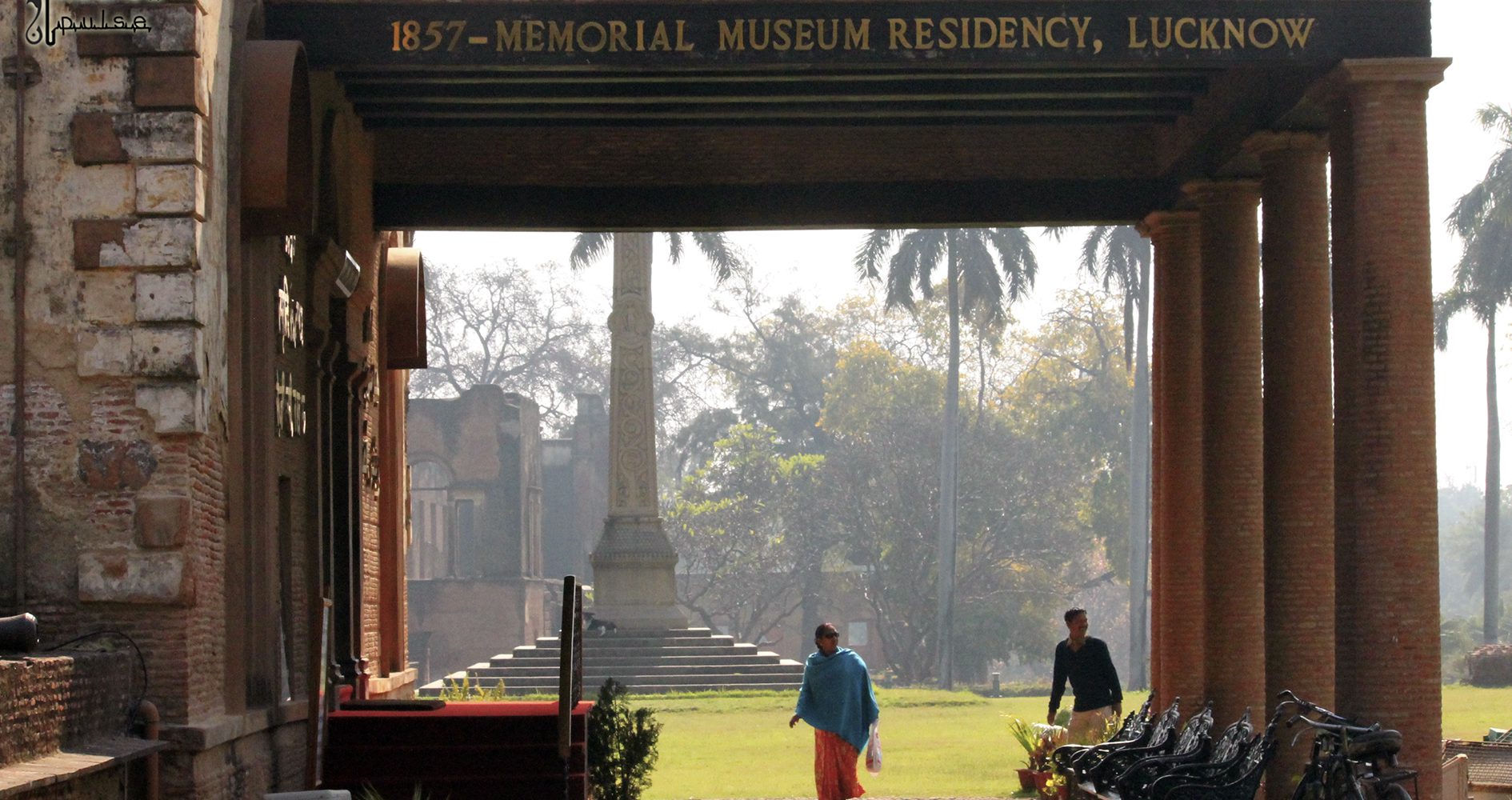Sleeping quietly in the middle of the city, the British Residency is a popular historical landmark in Lucknow. On a dry sunny day, the only voices you can hear are the drone of bees, the occasional cawing of crows, and the chirruping of the birds. But, through the shelter of the trees on the pathways, the air carrying the scent of flowers, takes you back in the period of the revolt of 1857, when these sounds would have been overtopped by the noisy bombardment of the shells and gunfires, the air would have carried the smell of gunpowder, and the building would have been occupied by the British officers supported by loyal natives.
History of the British Residency
During the revolt of 1857, when Lucknow became the center where the main forces of both the British and rebels were concentrated, the building acted as a safe haven for 3,000 British natives. In fact, Lucknow became the focal point of the entire official activities of the British Raj. The Residency turned into an autocratic center for the British generals and administrators for 90 days during the Revolt of 1857.
The somewhat dilapidated remains of the building stand in close proximity to other historical monuments such as Tehri Kothi, Shaheed Smarak and High Court. The Residency was built by Nawab Saadat Ali Khan II. He was the 5th Nawab of the province of Awadh. It took almost 20 years to build the Residency from 1780 to 1800 AD. In the 19th century, when John Bailley became the official resident of the British Empire in Lucknow, Nawab Saadat Ali Khan ordered the construction of Guard House here. It was popularly called Bailley Guard Gate. People can still see the famous Bailley Guard Gate while entering the premises of the Residency. The entire Residency complex was spread over 33 acres of land.
The Residency served as the official home for the British General. He used to work as an official representative of the British administration in the courts of Nawab. In the year 1857, Residency witnessed an extended battle. This battle or revolt is also identified as ‘Siege of Lucknow’. The Mutiny started on 1st July and ended on 17th November. Indian forces were defeated by British troops, led by Sir Colin Campbell. Although, the British troops achieved victory, the carnage left enduring scars of bitter mistrust between the Indians and the British. India came under the direct administration of the British Empire.
The Residency Today
At the moment, the Residency consists of ancient ruins of numerous buildings. Every building has its own tragic narration to tell. The separate buildings in the Residency complex were generally named after the people who resided there. The ruins of famous buildings are still there such as Sago’s House, Dr. Fayrer’s House, Anderson Post, Brigade Mets, Redan Battery and Kanpur Battery. The marks that remain of the cannon and gun shots on the damaged walls of all the buildings in the Residency, remind people of the harsh ordeal faced by our freedom fighters.
There are graves of some 2500 children, men and women here. The Residency complex also houses the St. Mary’s Church, though completely damaged. There is also a damaged post office, mosque, jail, and a banquet hall. This famous landmark of Lucknow is a protected monument under the supervision of Archaeological Survey of India (ASI).


Comment here